You are starting a new business or creating a new marketing strategy and you would like to know its budget. In this case, you have to know what TAM, SAM, and SOM mean. It’s vital to come across these marketing concepts during the market analysis of your startup.
If you did not know these terms, in this post, we’ll look more closely at TAM, SAM, and SOM including how to calculate them, why they’re important, and examples of each.
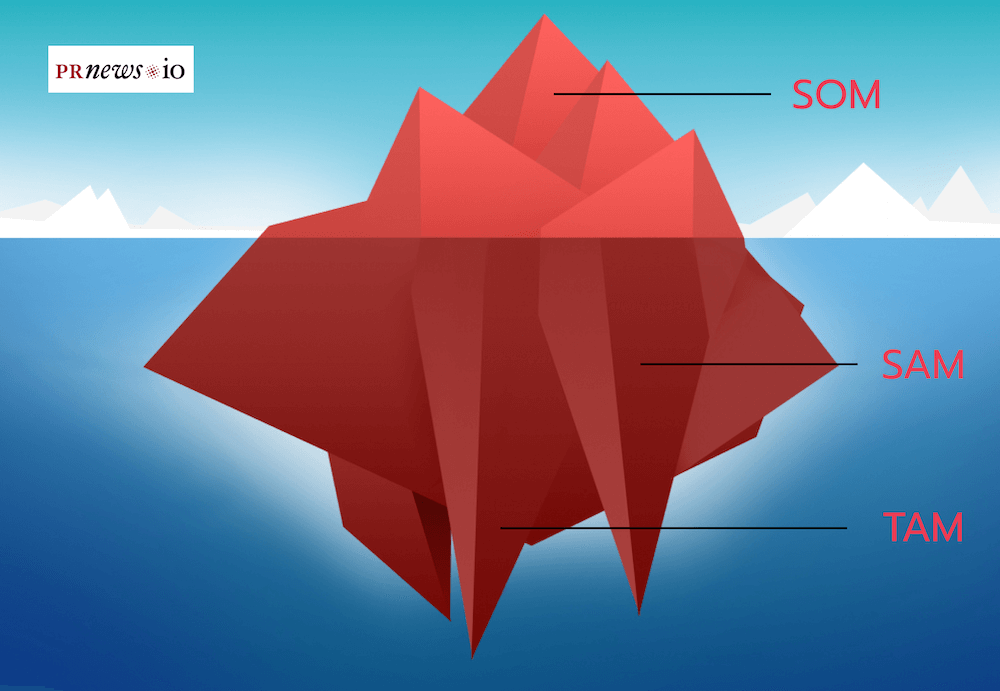
What are TAM, SAM, and SOM?
TAM, SAM, and SOM are the metrics to calculate the market size of the businesses. It’s a very useful tool with which you can make the first estimation of the audience for which a product or service is aimed. These formulas are used in the first steps of creating a startup, adjusting as the product launch process progresses.
PAM (Potential Addressable Market) -includes people not currently included in your target market, but could be in the future.
TAM (Total Addressable Market)– shows a panoramic view of the whole possible market’s size.
SAM (Serviceable Available Market)– narrows down TAM; gives a snapshot of the market part you might realistically reach with your business and your resources.
SOM (Serviceable Obtainable Market)– narrows down SAM; demonstrates your company’s immediate market focus, short-term plan, and initial offerings.
Together they provide a complete view of the market size that can help you create your company’s business plan and maximize your potential for success.
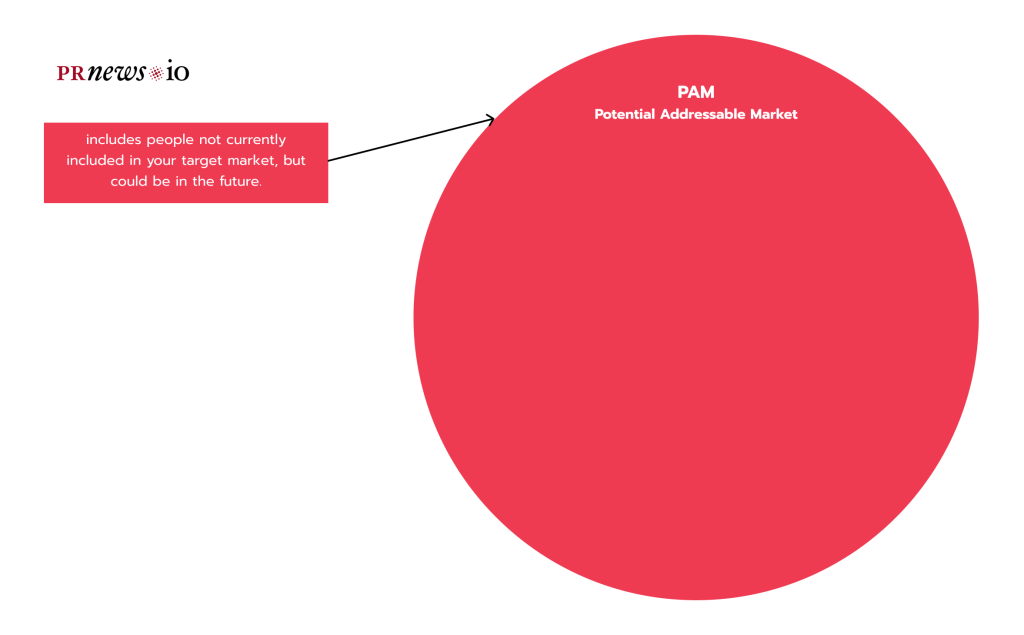
What Are the Benefits of TAM, SAM, and SOM Metrics?
Conducting TAM, SAM, and SOM analysis is critical for objective market estimation. It helps evaluate growth potential, giving you more confidence that your business idea is a good fit for the target market, and you set realistic revenue goals.
By breaking down the market size into segments, this analysis improves strategic decision-making, making your business start more resource-efficient.
Why Are TAM, SAM, and SOM Important for Marketing?
TAM, SAM, and SOM metrics provide a vision of market size, potential customer base, and achievable market segment. These metrics help distribute resources, helping businesses concentrate on market segments that align with their capacities and goals.
How Can You Use TAM, SAM, and SOM Metrics to Grow Your Business?
TAM, SAM, and SOM metrics in marketing strategy help understand market opportunities, size of target audiences, and income potential. Whether seeking investments or strategizing for scaling, these metrics serve as necessary tools for effective communication and planning.
Now let’s dive into these metrics and their formulas.
Total Addressable Market (TAM) Overview
TAM metric means total addressable market, sometimes called the total available market.
TAM shows the whole industry’s maximum market potential. For example, you’re starting an organic food company in the USA. Your TAM would be all people who live in the USA and lead a healthy lifestyle.
This metric is a speculative value because it’s almost unreal that one company will fulfill 100 percent of the total market demand and have sufficient resources to do so.
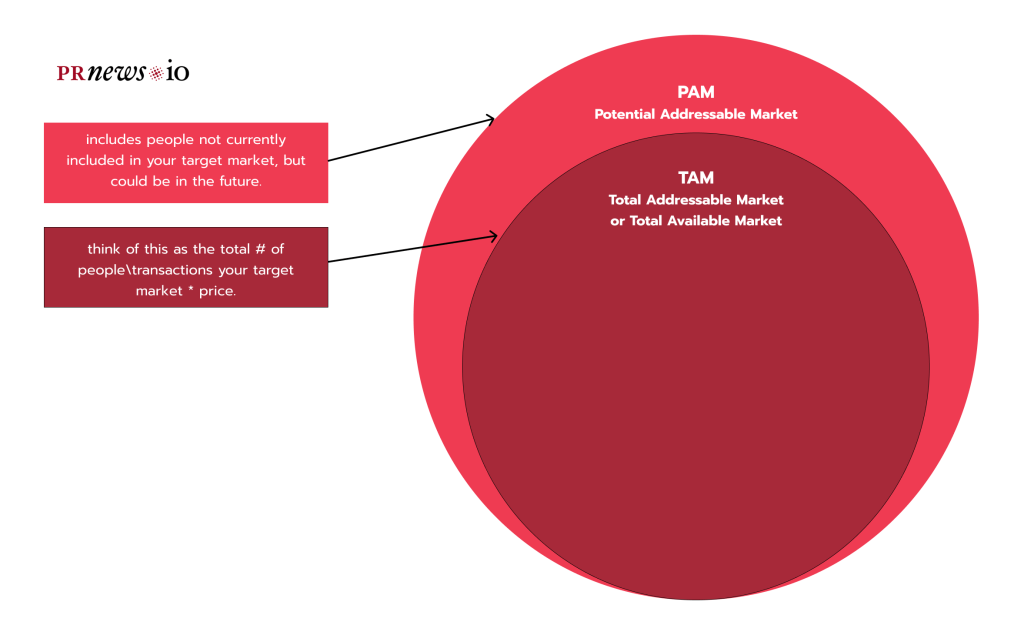
How to Calculate TAM
The most straightforward formula for calculating TAM is:
average annual customer revenue * total number of potential customers in the entire target market
When calculating TAM, it’s crucial to define your industry clearly. For instance, Uber provides much more than just a taxi service. And Amazon gives us more services than an online shop. These companies give us an understanding of how businesses serve the convenience industry.
Failing to determine your industry accurately is a serious mistake that can lead to harmful miscalculations in your market analysis.
Serviceable Available Market (SAM) Overview
SAM means serviceable addressable market or serviceable available market. It narrows down the TAM metric. Practically, as a startup, you probably won’t have the resources to create a monopoly in your industry. You probably also can’t capture all your TAM due to practical limitations around production, logistics, competitors, and other factors.
SAM metric helps companies estimate how much of the market they might capture with their current business model and resources.
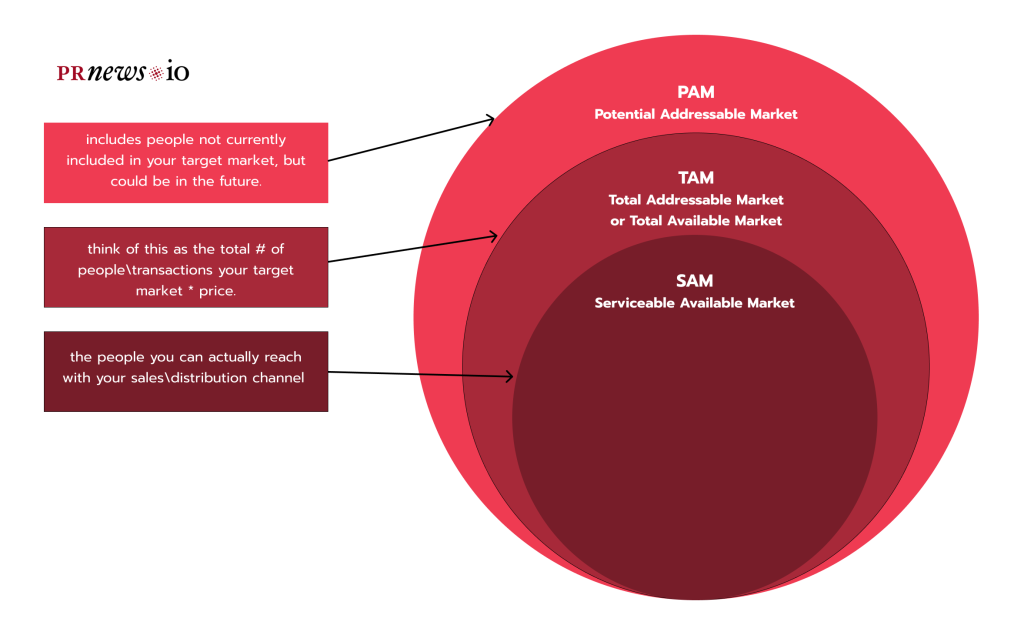
Let’s go back to the organic food startup. Our organic food company operates out of California and does not sell online. Research shows that most people in California are choosing to eat organic food. So our SAM would be the annual cost of the average California resident, multiplied by the total number of California residents.
It was a very brief explanation. Also, SAM lets you zoom in on your niche markets by distinguishing customer segments based on demographics, such as age, gender, geography, income levels, marital status, and more. This allows you to see where to get the share of your revenue in the short- and medium-term.
Of course, the available market you can capture (SAM) will be much smaller than the total available market metrics (TAM). SAM metric allows you to get a closer look at your market segments to target them accordingly.
How to Calculate SAM
The SAM formula is as follows:
all potential customers in my target market * average annual revenue from each user
Notice that TAM’s formula focuses on the entire industry, while SAM’s calculations go around your target market.
Serviceable Obtainable Market (SOM) Overview
SOM metric means the serviceable obtainable market, also known as “share of the market”.
It reduces your SAM even more, giving you an understanding of what part of the market you could realistically reach in the short term.
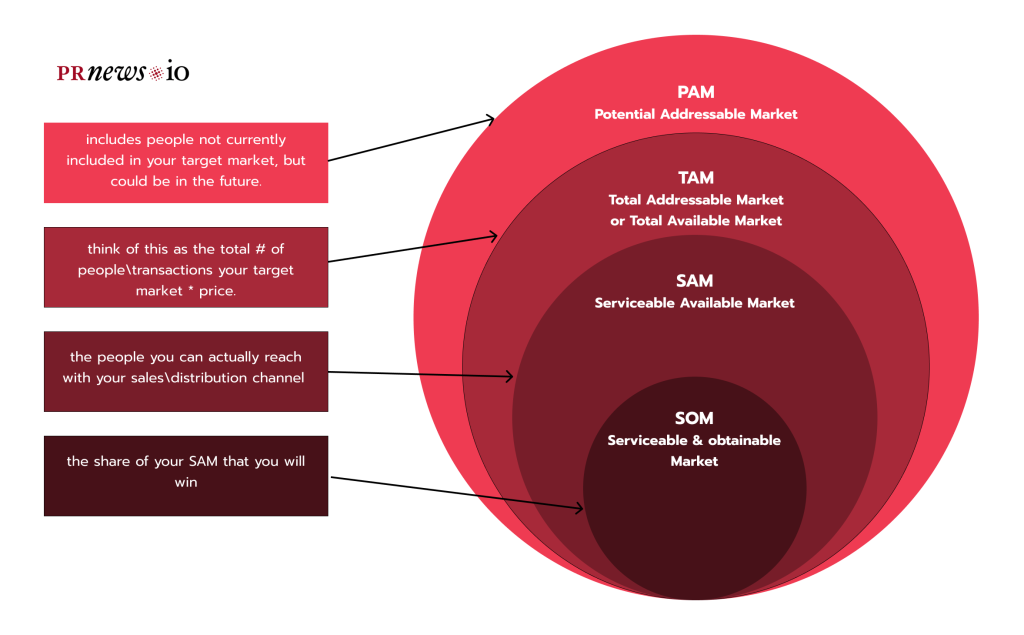
Let’s come back again to our organic food startup. Market research finds that most California residents who like buying organic food are single and between the age of 27-50. Based on these valuable insights, you decide to target single California residents of the appropriate age.
SOM is the most important metric among these three because if the market size is too small, the startup doesn’t have potential, and you won’t gain money with this business idea. As a result, its purpose is to see if current and short-term resources can support this business model and competition.
Knowing your SOM can help you formulate a marketing plan to implement these short-term goals and target your specific market. This strategic planning means decreasing risky investments in the early stage.
Useful note: you can increase your SOM market thanks to media publications. When you have your target audience well-defined, it’s easier to introduce your new business idea and talk about your company. PRNEWS.IO can help you with creating and distributing the appropriate content for your business.

How to Calculate SOM
There are two formulas. The first one is the SOM for the growing company. The formula is:
(last year’s revenue / last year’s SAM) * this year’s SAM
Start with finding last year’s market share by dividing last year’s revenue by last year’s SAM. Then multiply last year’s market share by this year’s SAM.
If you have a startup, you’ll need to perform a competitive analysis to estimate your SOM. Analyze last year’s revenue and SAM of your competitors with similar business models, demographics, and other similar characteristics.
TAM SAM SOM Example
For a fast food restaurant, the Total Addressable Market (TAM) would be the fast food restaurant market in your area. You can only achieve this if your restaurant is the only one in the area and has absolutely no competition.
However, it would be more realistic to estimate the market size based on the eating habits of the residents. So the Serviceable Available Market (SAM) represents the demand for your type of product within your area.
Also, it’s also still important to take into consideration your competitors. You can’t have the entire SAM as a market in this case, because your restaurant won’t be the one there. With the Serviceable Obtainable Market (SOM), you take into account that you are only going to have people within a certain area of the city as customers, who are eager to try new places to eat and other factors.
In this case, your first customers could be foodies who are always looking for the latest dining options or perhaps people within an 800-meter radius. Those early birds will provide you with the most important feedback.
Models to Make Estimates
To use these three TAM, SAM, and SOM metrics, you can choose to perform a top-down (Top-Down) or bottom-up (Bottom-Up) model to calculate the market size of our company. The latter is the most recommended by professionals.
Top-Down
With this model you make your market estimation starting from the most global variables to progressively descend until reaching the most specific ones. In other words, you take the biggest possible number of the market size and then narrow it down.
To do this, you can utilize market reports, industry analysis, specialized books, statistical sources, research, etc.
Once the customer segmentation has been outlined, you must look for the volume of customers and make some calculations with the volume of customers in the area or zone in which you want to locate your company.
For example, with Colombian coffee for Spanish residents, you could start with statistics or studies on coffee in Spain or on different segments such as areas, gender, marital status,…
Bottom-Up
It is quite the opposite since it starts with the details and the smallest segments. It’s trying to predict the smallest issues of the company that will cause the biggest problems to be resolved, little by little.
With this model you’re starting from the bottom: by considering who is your average customer, what are his/her needs, and what price he/she’s ready to pay for your product, and then find out how many similar people you have in your area.
Challenges and Considerations
While TAM, SAM, and SOM provide a robust framework for market analysis, it has its challenges. Some considerations include:
- Dynamic Markets: Markets are constantly evolving, and businesses must adapt their strategies accordingly.
- Data Accuracy: The accuracy of market data is crucial for reliable calculations of TAM, SAM, and SOM.
- Competitive Landscape: Changes in the competitive landscape can impact market dynamics, affecting a company’s ability to capture its obtainable market share.
- External Factors: Economic conditions, regulatory changes, and other external factors can influence market dynamics.
Wrapping Up
Understanding TAM, SAM, and SOM is vital to refining your business and marketing strategy. Once you have found out what TAM, SAM, and SOM mean for your niche and your company, you can optimize your marketing strategies to focus on specific market segments.
Is your business in need of a PR makeover?
- Benefit from media coverage assistance.
- Witness a refined branding approach.
- Watch as your recognition soars.





